Pocheongyegok Valley (포천계곡)
0m 40429 2021-02-18
Hwajuk-ri, Seongju-gun, Gyeongsangbuk-do
+82-54-930-8371
Pocheongyegok Valley is a representative valley of Gayasan Mountain with clear water and a lush forest. The valley used to be a learning place for local scholars in the old days. Eungwa Lee Wonjo, a civil minister and a great scholar during the late Joseon period, spent the later years of his life at Mangwijeong Pavilion located along the upper steam near a small waterfall. The beautiful valley scenery stretches over 7 kilometers.
Gayasan National Park Nature Center (국립공원 가야산생태탐방원)
4.1 Km 1 2024-02-23
313 Bongyang-ro 1-gil, Suryun-myeon, Seongju-gun, Gyeongsangbuk-do
Situated in Gayasan National Park, the Nature Center invites visitors to explore the moutain's ecology. Established in 2018 on the grounds of the former Gaya Farm, it serves as a sanctuary for restoring the body and mind and for finding inspiration amidst nature. Facilities include a dormitory, an education center, a restaurant, a nature walk trail, and an outdoor concert hall. The center's ecotourism programs feature trail trekking and the Yuyujajeok Healing Day, offering activities like soap-making and insect model crafting. Noteworthy nearby sites include Gayasan Wildflower Botanical Garden and the Gayasan History & Myth Hall.
Daegacheongyeogok Valley (Muheulgugok) (대가천계곡(무흘구곡))
5.5 Km 43866 2024-02-23
Sincheong-ri, Suryun-myeon, Seongju-gun, Gyeongsangbuk-do
Daegacheongyeogok Valley starts just past Seongju Dam and winds its way towards Cheongamsagyegok Valley in Gimcheon city. The valley's crystal-clear waters, combined with its unique rock formation, creates a spectacular view. Its broad expanse, gentle flow, and shallow depths make it a popular summer getaway. Lifeguards are on duty from early June to late August, providing safety for visitors. Additionally, the nearby Gayasan Mountain and Dogyongsanseong Fortress are worth exploring.
Gayasan National Park (Hongnyu-dong, Cheongnyang-dong Area) (가야산국립공원(홍류동,청량동지구))
6.7 Km 32609 2021-06-08
1200, Gayasan-ro, Hapcheon-gun, Gyeongsangnam-do
+82-55-930-8000
Gayasan Mountain stretches along the border of Gyeongsangnam-do and Gyeongsangbuk-do in an area of approximately 76 square kilometers. The mountain's peak, Sangwangbong Peak, reaches 1,430 meters above sea level. Gayasan Mountain was designated as Scenic Site No. 5 in 1966 and National Park No. 9 in 1972 due to its breathtaking scenery. Gayasan Mountain is known to offer one of the best scenic views in the country and also as the home of Haeinsa Temple.
Sangbiwon[Korea Quality] / 생비원[한국관광 품질인증/Korea Quality]
7.6 Km 180 2020-12-10
28, Nori 2-gil, Deokgok-myeon, Goryeong-gun, Gyeongsangbuk-do
+82-10-6732-4578, +82-54-954-1528
Saengbiwon is a traditional hanok pension located 400 m above sea level on Gayasan Mountain, Goryeong, North Gyeongsang Province. Its picturesque front garden, full of clay pots and wildflowers, and the dried persimmon hanging on the porch come fall give the pension a comfortable, idyllic atmosphere. Clear water from the Sangbiri Valley flow near the pension and a footpath along the reservoir offer great opportunities to enjoy the nature of Gayasan Mountain. Opening the window brings one face-to-face with the four seasons of the mountain, while the pavilion in the garden emanates a cool, slow-paced enjoyment of nature. All water used in the pension is drawn from a natural mineral spring 150 m below the land, giving the water a crisp and refreshing taste.
The seven rooms of the pension, including the Dongbaek, Maehwa, Mongnyeon, Moran, and Hwangtobang are furnished with red clay and Cheongsong hanji (Korean traditional paper) interior, giving them a characteristic hanok look. Wooden wardrobes and thick cotton quilts bring in mind the image of a grandmother’s warm house. Two of the rooms are heated with traditional gudeul floor heating, which is a blessing in the biting heat of winter. All rooms have access to Wi-Fi, equipped with modern bathrooms, electric kettle, pressure rice cooker, and simple cooking utensils. Only the Hwangtobang room allows cooking within the room, and guests in other rooms must use the communal kitchen and barbeque areas. There is also an annex, which hosts exclusively group visitors and can be used as a seminar room and a training site. .
Saengbiwon’s other pride is the traditional sauces, made in house for four generations. Visitors can reserve an elegant Korean breakfast, served in brass tableware, made with Saengbiwon’s handmade sauce from Korean soybeans. Saengbiwon also offers programs like sauce-making, Korean malt candy-making, tofu-making, Korean sweets-making, and tea ceremony.
Nonggamatjip Mil (농가맛집 밀)
7.7 Km 4139 2024-02-23
1566 Deogun-ro, Suryun-myeon, Seongju-gun, Gyeongsangbuk-do
054-931-2660
Nonggamatjip Mil is located near Gayasan Wildflower Botanical Garden. This establishment serves dishes made from vegetables harvested from Gayasan Mountain, in-house produced honey, and agricultural products from Seongju. Their signature offering is the Mil hanjeongsik (Korean table d'hote), featuring borigulbi (barley-aged dried yellow croaker), grilled chicken, and japchae. Additionally, they offer handmade bowls, honey, and flower tea for sale.
Gaya Hotel (가야호텔)
7.7 Km 8298 2020-04-24
52, Gayasansingmurwon-gil, Seongju-gun, Gyeongsangbuk-do
+82-54-931-3500
Gaya Hotel is located 560 meters above sea level on Gayasan Mountain in a pristine natural environment. The hotel also offers a sauna that uses natural mineral water. Near the hotel is the only Korean wild flower botanical garden.
Gayasan Wildflower Botanical Garden (가야산 야생화식물원)
7.7 Km 13233 2021-12-22
49, Gayasansingmurwon-gil, Seongju-gun, Gyeongsangbuk-do
+82-54-931-1264
Gayasan Wildflower Botanical Garden opened on June 16, 2006 as the nation's first botanical garden dedicated to wildflowers. The garden is home to over 400 plant species, ranging from wildflowers to trees, and serves as a cultural space with educational research and preservation training. In addition to the general exhibition hall, there is a greenhouse on the basement level. There are 92 tree types including pine, 54 bush types including royal azalea, and 257 wildflower types including windflowers. The garden is beautiful all year round, showcasing the changing of the seasons.
Gayasan National Park (Baegundong Area) (가야산국립공원-백운동 지구)
8.0 Km 19960 2021-04-28
Baegun-ri, Seongju-gun, Gyeongsangbuk-do
+82-55-930-8000
Gayasan Mountain in Gyeongsangbuk-do was designated as a national park in 1972. The mountain's main peak, Chilbulbong Peak, towers at 1,433 meters. It borders Seongju-gun, Hapcheon-gun and Geochang-gun. In particular, the mountain range stretching along Suryun-myeon, Seongju-gun is famous for its scenic nature. Furthermore, the beautiful Gayasan Beltway, which extends from Suryun-myeon to Gayasan Mountain, highlights the splendor and grandeur of the precipitous crimson cliffs.
Hapcheon Haeinsa Temple (해인사 (합천))
9.8 Km 109040 2022-12-26
122, Haeinsa-gil, Hapcheon-gun, Gyeongsangnam-do
+82-55-934-3000
Haeinsa Temple is one of Korea's three largest temples, and was founded during the third year of King Ae-jang's reign (802) by two monks Suneung and Ijung. The name "Haein" originates from the expression "Haeinsammae of Hwaeomgyeong" (Buddhist scripture), which means truly enlightened world of Buddha and our naturally undefiled mind. Along with the Printing Woodblocks of the Tripitaka Koreana (National Treasure) and Janggyeongpanjeon Depositories (National Treasure), various treasures are enshrined at Haeinsa Temple.
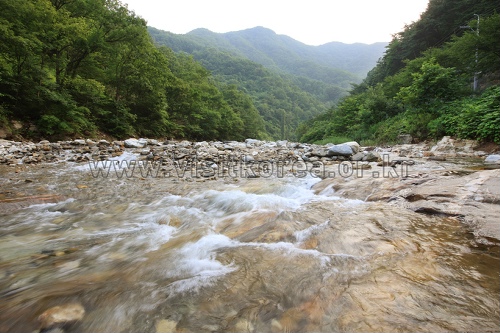

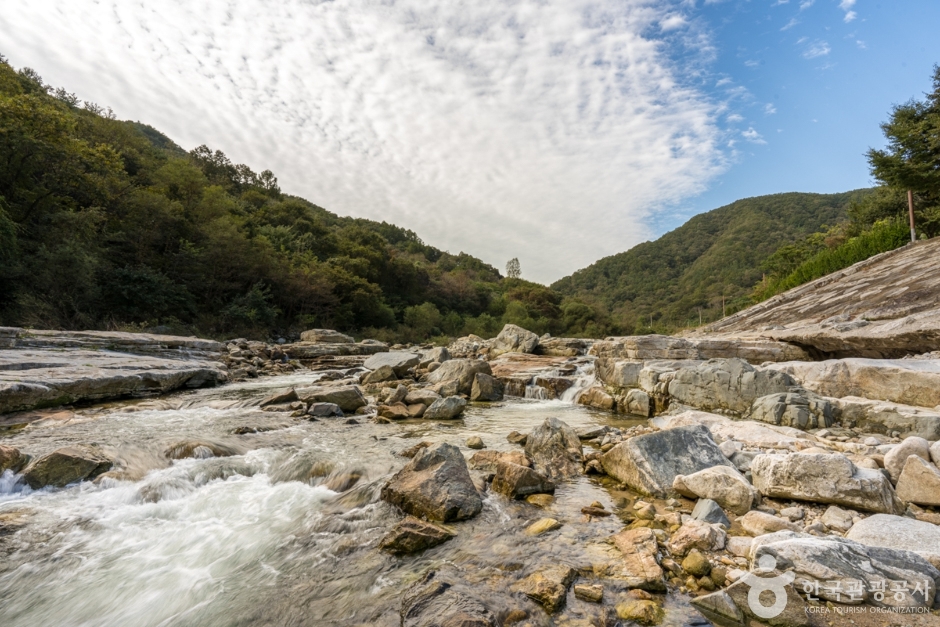
![Sangbiwon[Korea Quality] / 생비원[한국관광 품질인증/Korea Quality]](http://tong.visitkorea.or.kr/cms/resource/83/2651483_image2_1.jpg)
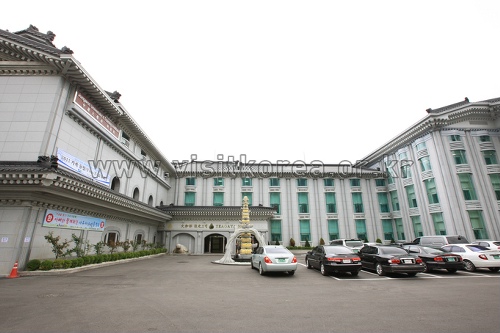
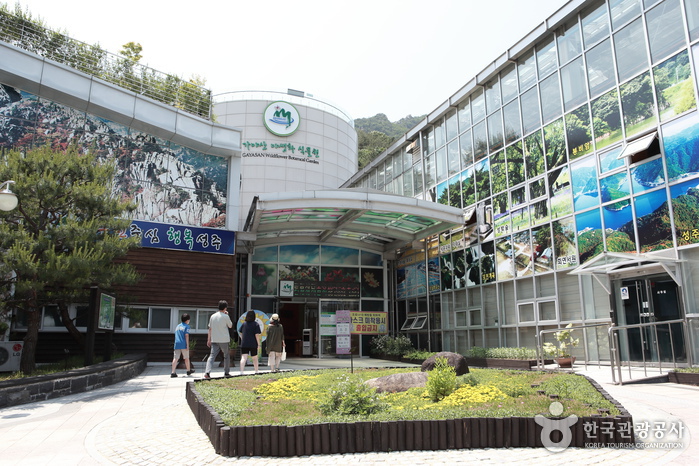
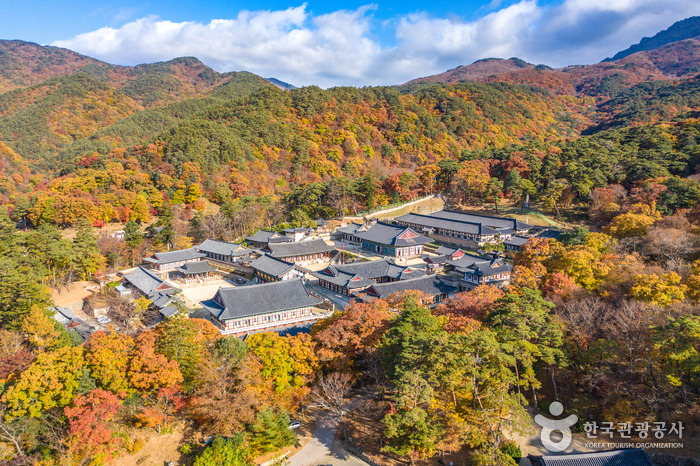
 English
English
 한국어
한국어 日本語
日本語 中文(简体)
中文(简体) Deutsch
Deutsch Français
Français Español
Español Русский
Русский